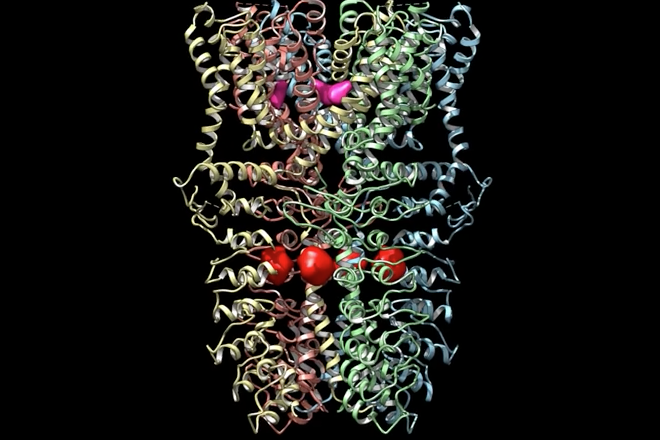
April 12, 2015
 University of California, San Francisco/YouTube
University of California, San Francisco/YouTube
A structural model of the TRPA1 receptor.
Wasabi is most often used to give sushi an extra pungent kick, but new research on the condiment's physiological effects may soon help drug makers create pain medications that kick in with greater relief.
“We’ve known that TRPA1 is very important in sensing environmental irritants, inflammatory pain, and itch, and so knowing more about how TRPA1 works is important for understanding basic pain mechanisms," said Dr. David Julius, professor and chair of the UCSF physiology department. "Of course, this information may also help guide the design of new analgesic drugs.”
With many copies of the proteins suspended in this glassy ice, like insects trapped in amber, the researchers capture as many as 100,000 images, then computationally combine these thousands of two-dimensional views to generate the three-dimensional structure of the protein.